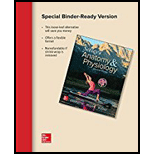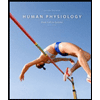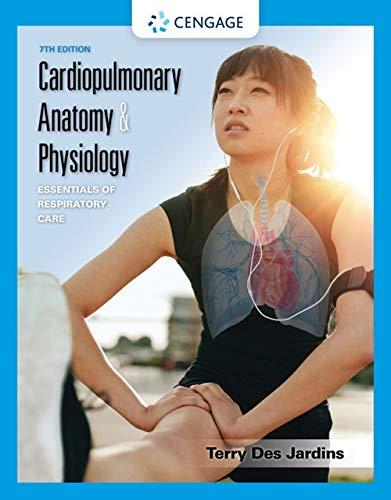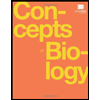
SEELY'S ANATOMY+PHYS.<LSLEAF W/CONNECT>
11th Edition
ISBN: 9781259990786
Author: REGAN
Publisher: MCGRAW-HILL HIGHER EDUCATION
expand_more
expand_more
format_list_bulleted
Concept explainers
Question
Chapter 23.2, Problem 3AYP
Summary Introduction
To name:
The parts of the upper and lower respiratory tracts.
Introduction:
The respiratory system has components that are used to obtain oxygen and remove carbon dioxide from the blood. Oxygen is needed to perform various cellular activities, such as the synthesis of ATP.
Expert Solution & Answer
Want to see the full answer?
Check out a sample textbook solution
Students have asked these similar questions
Despite two individuals having high BMI with similar values, one person is more susceptible to cardiovascular disease than the other. This persons's obesity is known as
Group of answer choices
genetic obesity
dietary obesity
android obesity
gynoid obesity
It is generally believed that earlier adaptation to cold would affect survival in hypoxia. This effect is known as-
Group of answer choices
habituation
negative acclimatization
positive acclimation
accommodation
How is convection altered in a hot sauna room? What would be the net heat exchange? Use appropriate formula to explain.
Chapter 23 Solutions
SEELY'S ANATOMY+PHYS.<LSLEAF W/CONNECT>
Ch. 23.1 - Prob. 1AYPCh. 23.1 - Explain the functions of the respiratory system.Ch. 23.2 - Prob. 3AYPCh. 23.2 - Explain how the conducting zone differs from the...Ch. 23.2 - Describe the structures of the nasal cavity.Ch. 23.2 - Prob. 6AYPCh. 23.2 - Prob. 7AYPCh. 23.2 - Prob. 8AYPCh. 23.2 - Distinguish between the vestibular and vocal...Ch. 23.2 - How does the position of the arytenoid cartilages...
Ch. 23.2 - What are the four functions of the larynx?Ch. 23.2 - Explain the branching of the tracheobronchial...Ch. 23.2 - Describe the arrangement of cartilage, smooth...Ch. 23.2 - How is debris removed from the trocheobronchial...Ch. 23.2 - Name the two types of cells in the alveolar wall,...Ch. 23.2 - Prob. 16AYPCh. 23.2 - Distinguish among a lung, a lung lobe, a...Ch. 23.2 - Prob. 18AYPCh. 23.2 - List the muscles of inspiration, and describe...Ch. 23.2 - Name the pleurae of the lungs. What is their...Ch. 23.2 - What are the two major routes of blood flow to and...Ch. 23.2 - Prob. 22AYPCh. 23.3 - What is ventilation?Ch. 23.3 - How do pressure differences and resistance affect...Ch. 23.3 - Prob. 25AYPCh. 23.3 - Prob. 26AYPCh. 23.3 - Prob. 27AYPCh. 23.3 - Prob. 28AYPCh. 23.3 - Prob. 29AYPCh. 23.3 - Prob. 30AYPCh. 23.3 - Prob. 31AYPCh. 23.3 - Prob. 32AYPCh. 23.3 - Prob. 33AYPCh. 23.4 - Prob. 34AYPCh. 23.4 - Prob. 35AYPCh. 23.4 - Prob. 36AYPCh. 23.4 - Prob. 37AYPCh. 23.4 - Prob. 38AYPCh. 23.4 - What is dead space? Contrast anatomical dead space...Ch. 23.5 - Prob. 40AYPCh. 23.5 - Prob. 41AYPCh. 23.5 - Prob. 42AYPCh. 23.5 - Describe the four factors that affect the...Ch. 23.5 - Does O2 or CO2 diffuse more easily through the...Ch. 23.5 - What effect do alveolar ventilation and Pulmonary...Ch. 23.5 - What are the anatomical shunt and the...Ch. 23.5 - Prob. 47AYPCh. 23.6 - Describe the partial pressure of O2 and CO2 in the...Ch. 23.6 - How do these pressures account for the movement of...Ch. 23.6 - Prob. 50AYPCh. 23.6 - Prob. 51AYPCh. 23.6 - What is the Bohr effect? How is it related to...Ch. 23.6 - Prob. 53AYPCh. 23.6 - Prob. 54AYPCh. 23.6 - Prob. 55AYPCh. 23.6 - Prob. 56AYPCh. 23.6 - Prob. 57AYPCh. 23.6 - Prob. 58AYPCh. 23.6 - Prob. 59AYPCh. 23.6 - Prob. 60AYPCh. 23.6 - Prob. 61AYPCh. 23.7 - Prob. 62AYPCh. 23.7 - Prob. 63AYPCh. 23.7 - Prob. 64AYPCh. 23.7 - Prob. 65AYPCh. 23.7 - Prob. 66AYPCh. 23.7 - Prob. 67AYPCh. 23.7 - Prob. 68AYPCh. 23.7 - Prob. 69AYPCh. 23.7 - Prob. 70AYPCh. 23.8 - Prob. 71AYPCh. 23.9 - Why do vital capacity, alveolar ventilation, and...Ch. 23.9 - Prob. 73AYPCh. 23 - The nasal cavity a. has openings, the paranasal...Ch. 23 - The larynx connects the oropharynx to the trachea....Ch. 23 - Terminal bronchioles branch to form a. the...Ch. 23 - Prob. 4RACCh. 23 - During quiet expiration, the a. abdominal muscles...Ch. 23 - Prob. 6RACCh. 23 - Prob. 7RACCh. 23 - Prob. 8RACCh. 23 - Prob. 9RACCh. 23 - Prob. 10RACCh. 23 - Prob. 11RACCh. 23 - Prob. 12RACCh. 23 - Prob. 13RACCh. 23 - Prob. 14RACCh. 23 - Prob. 15RACCh. 23 - Prob. 16RACCh. 23 - Prob. 17RACCh. 23 - Prob. 18RACCh. 23 - Which of these parts of the brainstem is correctly...Ch. 23 - Prob. 20RACCh. 23 - Prob. 21RACCh. 23 - Prob. 1CTCh. 23 - Prob. 2CTCh. 23 - Prob. 3CTCh. 23 - One technique for artificial respiration is...Ch. 23 - Prob. 5CTCh. 23 - Prob. 6CTCh. 23 - Prob. 7CTCh. 23 - Prob. 8CTCh. 23 - Prob. 9CTCh. 23 - Prob. 10CTCh. 23 - Compliance of the lungs and thorax is the volume...
Knowledge Booster
Learn more about
Need a deep-dive on the concept behind this application? Look no further. Learn more about this topic, biology and related others by exploring similar questions and additional content below.Similar questions
- How have the Arctic Inuits (people living in the Arctic) been able to stay in such cold conditions for so long? List and explain your reasons.arrow_forwardRecently I saw an action movie where the kidnappers accidentally killed the business tycoon by immersing his face in ice water. What could be the cause of death in this case? Group of answer choices vasodilation of peripheral vessels restriction of limb movement cardiac arrhythmia inability to open the eyesarrow_forwardBesides lack of food, what are the other physiological conditions that exacerbate the effects of starvation in developing countries?arrow_forward
- 1. A few years back, the faculty in Biology department faced complete loss of their research labs and office space due to unexpected flooding. This was early in the morning when students had come on-campus for their classes and faculty were ready to start teaching. a. Briefly explain the pathway that would have been activated in this acute stress. b. Also, considering that it was a while before things resumed to normal, explain what the effects of chronic stress under such conditions were.arrow_forwardwhich produces such as Cellular Respiration begins with NAD+ which is broken down during, to make which produces which occurs in the in the presence of anaerobic respiration that is used in pyruvate that is used in aerobic respiration alcohol such as which produces which is used in the to make 32 ATP -which produces which occurs in the starting with which occurs in thearrow_forwardDay 3-A: Venn Diagram Directions: Using the Venn diagram, describe a pure substance using the properties of elements and compounds. Write only the letters corresponding to your responses. PURE SUBSTANCE ELEMENTS COMPOUNDS A. It is the simplest form of matter.. B. It cannot be separated into simpler components by chemical means. C. It is made by two or more elements combined. D. It serves as the building block of other substances. E. Examples are oxygen, hydrogen, carbon, and gold. F. It can be separated into simpler substances by chemical means. G. It is represented by a chemical formula. H. Examples are water, sugar, salt, and baking soda. 3arrow_forward
- Describe in details the two molecular processes in steroid and peptide actionarrow_forwardCan you choose one topic of interest associated with microbiology, human diseases and / or human health.arrow_forwardPatients identified as at risk for falling are the most likely to suffer an Unanticipated Physiological fallarrow_forward
arrow_back_ios
SEE MORE QUESTIONS
arrow_forward_ios
Recommended textbooks for you
 Human Physiology: From Cells to Systems (MindTap ...BiologyISBN:9781285866932Author:Lauralee SherwoodPublisher:Cengage LearningSurgical Tech For Surgical Tech Pos CareHealth & NutritionISBN:9781337648868Author:AssociationPublisher:Cengage
Human Physiology: From Cells to Systems (MindTap ...BiologyISBN:9781285866932Author:Lauralee SherwoodPublisher:Cengage LearningSurgical Tech For Surgical Tech Pos CareHealth & NutritionISBN:9781337648868Author:AssociationPublisher:Cengage Cardiopulmonary Anatomy & PhysiologyBiologyISBN:9781337794909Author:Des Jardins, Terry.Publisher:Cengage Learning,
Cardiopulmonary Anatomy & PhysiologyBiologyISBN:9781337794909Author:Des Jardins, Terry.Publisher:Cengage Learning, Biology (MindTap Course List)BiologyISBN:9781337392938Author:Eldra Solomon, Charles Martin, Diana W. Martin, Linda R. BergPublisher:Cengage Learning
Biology (MindTap Course List)BiologyISBN:9781337392938Author:Eldra Solomon, Charles Martin, Diana W. Martin, Linda R. BergPublisher:Cengage Learning Concepts of BiologyBiologyISBN:9781938168116Author:Samantha Fowler, Rebecca Roush, James WisePublisher:OpenStax College
Concepts of BiologyBiologyISBN:9781938168116Author:Samantha Fowler, Rebecca Roush, James WisePublisher:OpenStax College

Human Physiology: From Cells to Systems (MindTap ...
Biology
ISBN:9781285866932
Author:Lauralee Sherwood
Publisher:Cengage Learning

Surgical Tech For Surgical Tech Pos Care
Health & Nutrition
ISBN:9781337648868
Author:Association
Publisher:Cengage

Cardiopulmonary Anatomy & Physiology
Biology
ISBN:9781337794909
Author:Des Jardins, Terry.
Publisher:Cengage Learning,


Biology (MindTap Course List)
Biology
ISBN:9781337392938
Author:Eldra Solomon, Charles Martin, Diana W. Martin, Linda R. Berg
Publisher:Cengage Learning

Concepts of Biology
Biology
ISBN:9781938168116
Author:Samantha Fowler, Rebecca Roush, James Wise
Publisher:OpenStax College